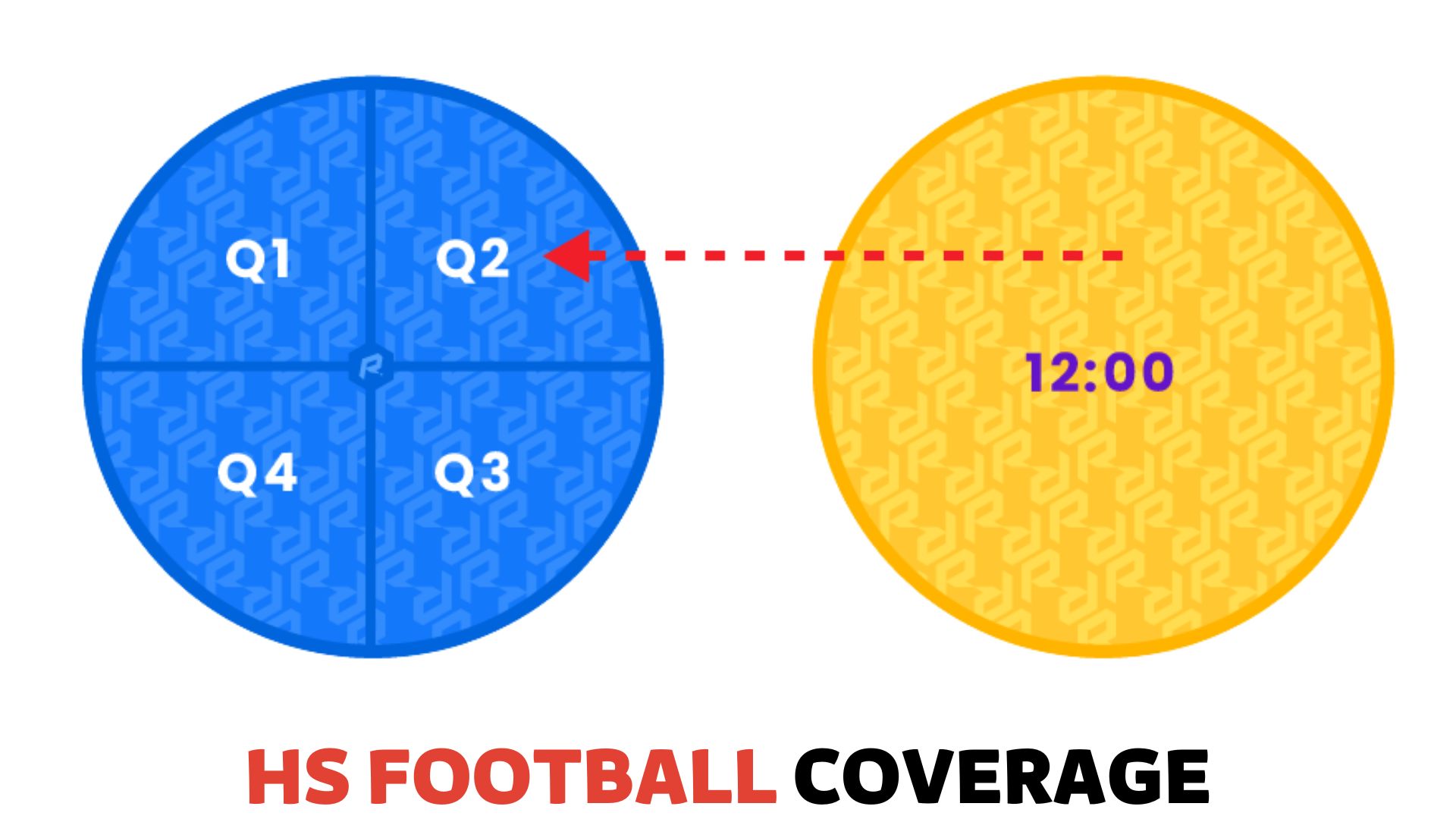
American High School Football is popular and has a long history. Women have rarely played football. Girls’ HS Football teams started in the 1920s and 1930s. These teams played exhibitions or charity games because no high school girls’ football league existed.
Social pressures and lack of school and athletic club support killed girls’ football in the 1940s and 1950s. The Women’s Football Alliance, the world’s largest club, has promoted female footballers since 2009. Over 60 US high school teams play in the league.
Title IX and gender parity have increased girls’ High School Football. Title IX prohibits gender discrimination in publicly funded education, including high school sports. Title IX mandates sports equality for boys and girls.
Girls’ High School Football is growing, but challenges remain. Safety matters. Football has gender variations and injury risks. Some say training and tools can lower girls’ risk of concussions and other injuries. This article will explore the history of girls playing HS Football.
What is the History of Girls Playing High School Football?
Boys have traditionally played High School Football. Many think football is too harsh for girls. Despite their challenges, girls have played football for years, albeit in tiny numbers.
Women’s football started in the 1920s and 1930s with all-female teams. Women’s football gained popularity during World War II because many men were drafted into the service, leaving football teams short-staffed.
Women’s football dropped after the war, and co-ed teams didn’t start until the 1970s. Their involvement was limited, and their male teammates and coaches often mocked them.
Girls have loved football despite the obstacles, and the first all-female High School Football team was formed in the 1990s. They have played HS Football in increasing numbers since then.
Girls play High School Football with many obstacles. The sport’s endurance is difficult. Football requires toughness and strength. Many think girls are too weak and prone to ailments to play football.
They need more support and tools. Girls need help finding coaches and teams in HS Football, where boys rule. Girls’ football teams need more funding or resources to contend with boys’ teams.
Girls show they can play High School Football despite these obstacles. Football helps girls build confidence, fortitude, and teamwork.
What are the Advantages of Allowing Girls to Play High School Football?
Girls playing HS Football is very beneficial. It allows girls to play a traditionally male-dominated sport. It can encourage gender equality and display girls’ athleticism.
Football can teach life skills and improve fitness. Sports teach teamwork, discipline, and leadership. Football improves girls’ bodily and mental health. Exercise reduces stress, improves arterial health, and boosts fitness.
It also promotes gender equity and gives them a new athletic outlet. Girls are increasingly interested in playing football, a thrilling and intense sport. Girls can play HS Football and be part of a team.
This can also boost their self-confidence and unity. Football helps girls keep active and develop leadership and problem-solving skills. Girls playing High School Football can break gender stereotypes and support gender equality.
Girls playing male-dominated sports convey that they can do anything boys can. This can inspire other girls to follow their passions despite gender norms.
What are the Disadvantages of Allowing Girls to Play High School Football?
There are many advantages to allowing girls to play High School Football. Injury is a major concern. Football’s physicality can cause concussions, broken bones, and torn tendons. This is especially worrisome when players need training or equipment. Schools and coaches must reduce these risks and provide girls with safe play training and tools.
Male partners or opponents may harass or bully female players. Many male-dominated games have this problem. To keep girls safe and supported while playing football, schools and coaches must stop pestering and bullying.
Due to gender stereotypes and appropriateness, some may oppose girls playing football. However, girls should be able to play sports if they want. Girls playing football break gender stereotypes and promote equity.
What Legal and Policy Considerations Affect Girls Participation in High School Football?
There is a law. The name of the law is Title IX. This law bans sex discrimination in federally funded school programs and activities. The Education Amendments Act of 1972 changed female equity in education. High schools must have sports classes., both for males and females.
Title IX requires schools to give boys and girls equal sports chances. If they have boys’ teams, schools must have girls’ teams and provide equal funding and facilities. Coaches, tools, and training must treat male and female athletes equally.
Several High School Football teams have barred girls from playing. Girls often claim Title IX violations. Some schools now let girls play football.
Sam Gordon’s 2012 football highlight reel made national news. Sam was an 8-year-old girl on Utah’s all-boys combat football team. Her father’s YouTube video got viral with millions of views. Sam’s story raised important questions about gender equity in sports and Title IX’s part in equalizing opportunities.
Since then, many girls have pushed for High School Football rights. Safety and social shame have prevented schools from changing. As more girls want to play football, schools must rethink their rules to allow all students to play.
Who Are Some Successful Female High School Football Players, and What Impact Have They Had?
High School girls are increasingly playing football. Boys play football more than girls. Many women are now interested in joining.
Successful female High School Football players have inspired young women to follow their goals and break gender stereotypes in sports. HS Football has risks and obstacles.
Becca Longo is a top High School Football star. Longo became the first female Division II football scholarship recipient in 2017. When she played for her Arizona high school team, Longo was one of the best kickers in the nation. Her success paved the way for other young women to play college football.
Sami Grisafe is a famous HS Football player. Grisafe quarterbacked her Illinois high school team. She was a great player, and her team won the state title in her senior year.
She played quarterback at Nevada, setting several school marks and earning praise. Grisafe has inspired young women to join football and helped equalize athletics.
Superb footballer Secondary school player Madi Martin. She was known as one of the nation’s toughest and best High School Football stars. Martin’s success has broken gender rules in sports, and more young women are playing football if they want to.
How Can High Schools Promote and Increase Girls Participation in Football?
High schools should encourage girls to play football and promote gender equity in sports. This aim requires equal assets and resources for boys’ and girls’ teams.
Both teams should have top-notch guidance, gear, and facilities. This involves hiring coaches with expertise in coaching girls, providing female-specific equipment, and ensuring that training facilities are safe and accessible to all players. Schools can give female players equal chances to thrive and improve by providing equal resources.
Female players need a supportive atmosphere too. Establishing clear policies and procedures to avoid and address discrimination and harassment, promoting good team dynamics, and encouraging male and female players to work together as equals can help. Schools can help female players with transit or facility issues.
Another way to boost participation is by recruiting girls for the football club. Schools can work with local youth leagues and organizations to find and recruit talented female players and hold events and clinics to introduce girls who may not have considered playing football.
Schools can combat gender stereotypes and promote sports equity by actively recruiting and supporting female athletes.
Schools can offer flag football or touch football in addition to combat football. These classes are safer for girls who don’t want to play tackle football and are less physically demanding. Schools can make football safe and fun for girls by providing a variety of choices.
It also can provide female athletes with leadership and role model chances to promote gender equality in sports. Schools can support female team captains and coaches to share their experiences and insights with other students. Schools can break gender stereotypes and encourage girls to play football by highlighting female players’ accomplishments.
Eventually, schools should honor female High School Football stars. This can include highlighting their accomplishments in school publications, featuring them in school assemblies and events, and allowing them to talk to other students about their experiences. Schools can foster gender equality in sports by honoring female athletes.
How Do Girls Football Leagues Differ From Boys? Leagues in Terms of Rules and Regulations?
Girls’ football leagues mirror boys’ rules. The game is played differently. Girls’ football teams may play shorter games with a tiny ball. Some teams require girls to wear chest protectors.
Despite these differences, girls’ football leagues are competitive and challenging, giving girls a chance to improve and fight at a high level.
Girls’ football leagues offer great training and competition. Girls’ football rules differ from boys’ to ensure female players’ safety and success.
Ball size differs! Girls’ teams use a smaller ball for their smaller hands and frames. This smaller ball is easier to grip and hurl, improving accuracy and ball control.
The game time also differs! Due to endurance and muscle differences, girls’ football games may be slightly shorter than boys’ in some leagues. Girls can compete without risking harm or overexertion.
Some leagues require girls to wear protective gear that guys do not. For breast protection, some leagues require female players to wear chest protectors. These safeguards let girls play the game boldly and safely.
Girls’ football is competitive and difficult despite these variations. Football helps girls build leadership, teamwork, and skills. Exercise and sports also improve their bodily and mental health.
Girls’ football teams are welcoming and supportive. Girls can form lasting bonds with fellow sports fans. They can also fight gender bias in sports.
Conclusion
Even though there are still problems to work out, girls can and should be able to play High School Football. By promoting girls’ participation in football, high schools can provide an inclusive and equal sports program that benefits all students.
The history of girls’ football shows that girls can be good at the sport and make a big difference. It is up to schools and communities to support and encourage girls to pursue their passion for football, just as they would for any male athlete.















